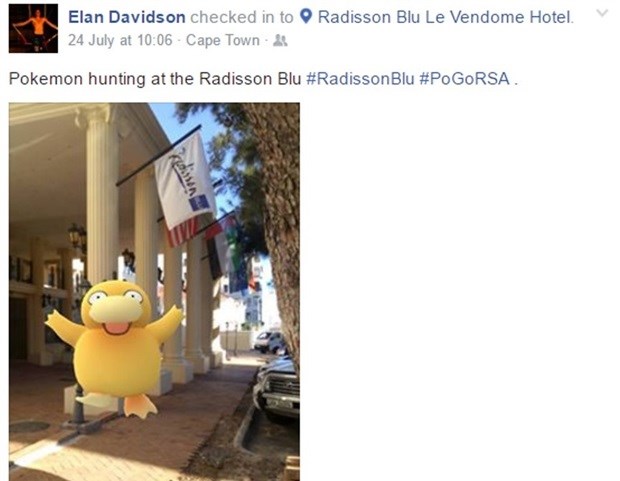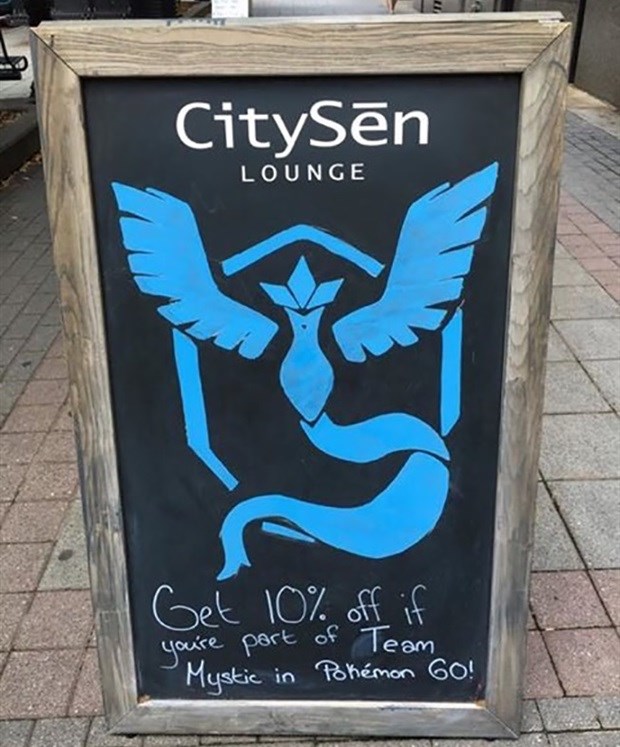
Top stories






More news











It has revolutionised the mobile gaming industry, some say even created a new category (although Ingress users may have some ‘before it was cool’ claims on AR mobile gaming category). As an out-of-home media nerd, what blows my mind is the way that it has so overtly changed the real world behaviour of the millennial age group audience.
A few weekends ago, approximately 4,000 users gathered on the Sea Point promenade over a four - five hour period as part of an event that was planned for and by a Pokémon Go user group that had popped up of its own accord on Facebook. More are planned across the country in the coming weeks. This is all before the game has even been made available in the South African app stores, so you can expect that we haven’t even started to peak locally yet.
Obviously demographics for the SA user base are not readily available, but here is a great infographic from Forbes.com that gives you an idea of the age breakdown from a study of users in the US:

I would expect our age profile in SA to be similar, but am yet to be convinced on the gender split.
Pokemon Go was specifically designed to get millennials up off the couch to explore the real world around them. All of the gameplay is built around mechanics that require actions in the physical world, and it is all based on location – where you are, how far you’ve walked, and all in real time. Its success in mobilising 18-29 year olds in the physical world is the overt proof of the effect mobile media can have on OOH consumer behaviour i.e. where they are spending time, when and what they are doing there. Change equals opportunity, so let’s look at a few examples of how savvy businesses and brands have and will leverage the opportunity Pokémon Go creates in the real world.
You need to understand a little bit about how the game works for what follows to really make sense, so do yourself a favour and take a minute to watch this video:
The event on the Sea Point promenade was a user community gathering where the attendees activated a number of lure packs to attract Pokémon to a specific location. What casual observers didn’t know is that even though the event wasn’t branded, it had been tactically supported by a few brands who were switched on enough to take advantage of the experiential opportunity – The Radisson drew participants to their location with the promise of coffee and snacks for trainers (players) based on their achieved level in the game, and incentivised them to share their experience at the hotel on social media by running a competition for a free night’s accommodation. Richarge, a mobile powerbank brand, was there to rent out their products to trainers whose batteries were running out.

The tactical opportunity does not end with directly integrated event support. Bigger brands might take a leaf out of the book of a savvy food truck operator who heard about the Pokémon event planned for the Promenade, being the agile business that it fundamentally has to be, made themselves available at the right place and time. They sold out that day.
Large user gathering at short term events are not the only change in behaviour that the game is creating, and is certainly not the only opportunity for brands to engage. Standard gameplay is creating changes in this audience’s location histories over the longer term and ultimately in greater numbers, and we are starting to discover data that can help us understand the where and when of it.
Being the connected, tech savvy consumers that they are, our local trainers have started recording and contributing information on where they have been catching Pokémon. They’ve even made an app called PokeTrack to make the job easier to complete in real time. All this data is then presented as a map, to help other trainers identify and target specific locations. This is what it looks like:

What you see here is a heat map showing where players have recently captured Pokémon in Cape Town. What we as OOH specialists see is a heat map of millennial hangouts that we can use to plan the distribution of OOH media campaign placements and target activations relevant to the millennial audience. In other words, we can use this new mobile data to identify locations that millennials are more likely to be found “out-and-about” more often and use it to make our clients campaigns more relevant to the millennial audience.
The really exciting opportunity that "Pokemon Go is arguably a more natural and interactive way to herd customers toward certain locations."
Activity in the Pokémon Go world is centred around predetermined points of interest that live in the virtual world (Pokestops and Gyms). They are based on locations in the real world and players return to these locations regularly to drop lure packs and capture Pokémon or to take ‘ownership’ of the specific location.
Businesses and entrepreneurs have already started leveraging the opportunity that this presents for increasing footfall (and therefore business) by supporting the experience of consumers in their physical space.
Smaller businesses who have found themselves luckily assigned with Pokestops and Gyms have started paying for and activating lures in the game to make Pokémon available for visitors to their stores and attract more visitors. The New York Post reported that New York pizzeria L'inizio Pizza Bar enjoyed a 75% jump in sales after its manager spent $10 on the Lure Module.
Stores that are aligned with Gym locations have put up simple signage to signal which team currently occupies the virtual ownership of the location.

McDonalds in Japan have struck a deal with Niantic to convert 3000 of its stores into Pokémon Go “Gyms”. The brand no doubt expects to benefit from the increased footfall of players returning to stores to battle (hopefully in the virtual world only) for ownership of the “Gyms” for their respective virtual teams. There is some debate as to whether the investment from the brand will yield increased footfall over the long term, but my opinion is that this will depend on the support that each store provides to the gaming experience. I would say that we can expect to see digital screens in-store communicating information about what’s happening locally in the Pokémon Go world in real time.
There doesn’t seem to be any word yet on whether similar deals will be available for brands in other countries, but watch this space…
Regardless of whether Pokémon Go is a fad, augmented reality (AR) mobile gaming has finally hit the mainstream and is here to stay over the long run. From an OOH point of view there are two key opportunities that we will be looking to capitalise on – data and OOH/mobile crossover.
Data: The more consumers interact with these location platforms, the more we get to know about their aggregated location affinities over time. What this increased insight lets us do is plan OOH campaigns that are more relevant to specific audience groups, and get more creative with how we use OOH media to add value to consumers lives (think exciting, relevant, contextually aware ads from clients, rather than the boring brand-and-brag clutter of today). Which brings us onto our second key opportunity;
OOH/mobile crossover: Consumers today operate between and across their digital and physical worlds seamlessly and continuously. They use their experiences in either ‘world’ to enrich their experiences across both – they share real life moments via online platforms like Facebook and use online platforms like Uber to engage with or control the real world around them. OOH advertisers and agencies should be looking to augment the experiences of consumers in both the physical and virtual worlds, by getting them to speak to each other in real time in the right location. As out of home inventory evolves from static to digital, expect to see more direct integration of the messaging on these physical structures with what is happening in the digital world.